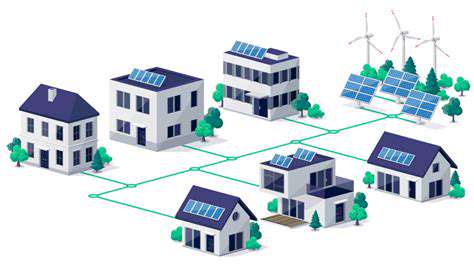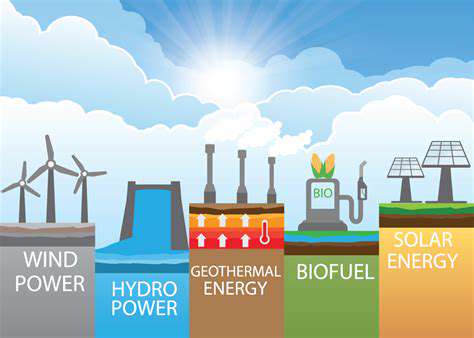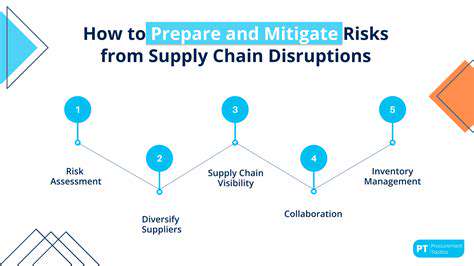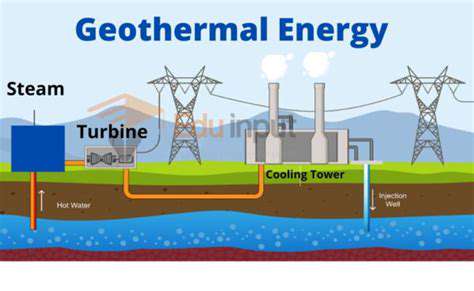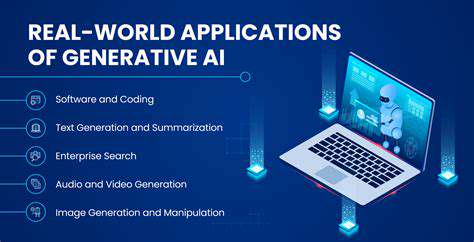Transparent Solar Panels for Building Facades: Aesthetic and Energy Generating Solutions
Imagine walking past a sleek office building, its glass facade glimmering in the sunlight. What you might not realize is that those very windows could be silently generating electricity. Transparent photovoltaic (PV) technology represents a paradigm shift in how we think about solar energy integration. Unlike traditional solar panels that dominate rooftops with their dark hues, these innovative solutions maintain full transparency while harvesting energy from sunlight.
The implications extend far beyond just aesthetics. Consider urban environments where space comes at a premium - every square inch of window surface becomes a potential energy generator. From skyscrapers to car windshields, this technology could fundamentally alter our energy infrastructure. Early adopters are already implementing prototypes in commercial buildings, demonstrating the practical viability of this approach.
Materials Science Breakthroughs
At the heart of this revolution lies materials innovation. Scientists have developed several approaches to achieving transparency while maintaining energy conversion capabilities:
- Quantum dot solar cells that absorb UV and infrared light while allowing visible light to pass through
- Organic photovoltaic materials that can be tuned for specific transparency levels
- Perovskite semiconductors offering high efficiency potential with adjustable optical properties
The manufacturing processes for these materials have seen remarkable advancements in recent years. Techniques like atomic layer deposition enable precise control over material thickness at nanometer scales, crucial for balancing transparency and efficiency.
Performance Metrics and Trade-offs
Current transparent solar technologies typically achieve 5-10% efficiency while maintaining 70-90% visible light transmission. While this may seem low compared to opaque panels, the potential surface area for deployment more than compensates. The key advantage lies in the ability to utilize existing building elements rather than requiring additional installations.
Researchers are focusing on several strategies to improve performance:
- Developing multi-junction designs that capture different light spectra
- Implementing light-trapping nanostructures to enhance absorption
- Optimizing electrode materials to minimize resistance losses
Architectural Integration Case Studies
Several landmark projects demonstrate the real-world potential:
| Project | Location | Key Features |
|---|---|---|
| The Edge | Amsterdam | Integrated PV glass facade reduces energy demand by 70% |
| BIQ House | Hamburg | Algae-filled transparent panels generate power while providing shade |
| SolarWindow | New York | First commercial application of liquid-applied transparent PV coatings |
These projects prove that transparent solar technology isn't just theoretical - it's already reshaping modern architecture. The combination of energy generation and aesthetic flexibility makes this approach particularly attractive for urban environments.
Cost Analysis and Adoption Curve
The economic equation for transparent PV involves multiple factors:
- Material costs have decreased by 40% since 2018 due to manufacturing scale-up
- Installation integrates with standard glazing processes, reducing labor costs
- Dual functionality (window + generator) provides unique value proposition
Projections suggest price parity with conventional high-efficiency glazing within 3-5 years. As production volumes increase and manufacturing techniques improve, the technology will become increasingly accessible.
Environmental Impact Assessment
The lifecycle benefits of transparent solar technology are significant:
- 30-50% reduction in embodied carbon compared to traditional PV-plus-window systems
- No additional land use required for installation
- Potential for building-integrated recycling programs
When deployed at scale, this technology could reduce urban carbon footprints by 15-20% in suitable climates. The distributed generation model also enhances grid resilience and reduces transmission losses.
Technical Challenges and Research Frontiers
While progress has been remarkable, several hurdles remain:
- Lifetime and degradation rates under real-world conditions
- Standardization of testing and performance metrics
- Integration with smart building systems
- Recycling pathways for end-of-life materials
International research collaborations are addressing these challenges through coordinated efforts. The U.S. Department of Energy's Solar Energy Technologies Office recently announced $40 million in funding specifically for transparent PV research.
Beyond the Aesthetic: Functional Advantages
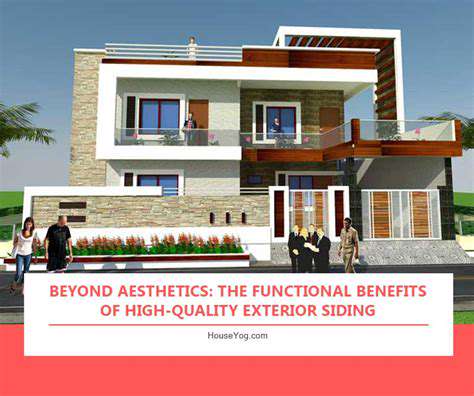
The Science of Functional Design
Contemporary architecture has evolved beyond mere form to embrace performance-driven design principles. The most successful projects achieve a harmonious balance between visual appeal and practical functionality. This approach considers everything from solar orientation to acoustic performance, creating spaces that genuinely enhance quality of life.
Key performance metrics now driving design decisions include:
- Daylight optimization metrics (sDA, ASE)
- Thermal comfort indices (PMV, PPD)
- Air quality benchmarks (CO2 levels, ventilation rates)
- Acoustic performance standards (STC, NRC)
Space Optimization Techniques
Modern spatial design employs several advanced strategies:
- Adaptive zoning that responds to usage patterns
- Transformable elements serving multiple functions
- Vertical space utilization through mezzanines and lofts
- Smart storage solutions integrated into structural elements
These approaches can increase usable area by 15-25% without expanding footprints. The result is more efficient, flexible spaces that adapt to evolving needs.
Technology Integration Framework
The modern built environment incorporates technology at multiple levels:
| Technology | Application | Impact |
|---|---|---|
| IoT Sensors | Environmental monitoring | 30-40% energy savings |
| Smart Glass | Dynamic light/heat control | Reduces HVAC loads by 25% |
| Building Automation | Integrated systems control | 15% operational efficiency gain |
This technological integration creates buildings that are essentially living systems, responding dynamically to environmental conditions and user needs.
Integration into Architectural Design: A Seamless Fusion

BIM Implementation Strategies
The adoption of Building Information Modeling has transformed architectural practice through:
- Parametric design capabilities enabling rapid iteration
- Clash detection reducing construction conflicts by 80%
- Quantity take-offs with 95% accuracy
- 4D/5D simulations for construction sequencing
Leading firms report 30% time savings and 20% cost reductions through comprehensive BIM adoption. The technology has become indispensable for complex projects.
Data-Driven Design Optimization
Advanced analytics now inform design decisions through:
- Energy modeling predicting performance within 5% accuracy
- Computational fluid dynamics optimizing ventilation
- Structural analysis minimizing material usage
- Daylight simulations ensuring optimal illumination
This data-centric approach leads to buildings that perform 40-60% better than code minimums. The integration of machine learning is further enhancing these capabilities.
Challenges and Future Prospects
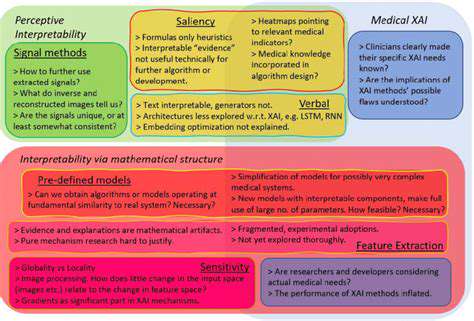
Overcoming Implementation Barriers
The path forward requires addressing several key challenges:
- Regulatory frameworks need updating for new technologies
- Workforce training to bridge skill gaps
- Financing models for innovative solutions
- Industry standardization efforts
Public-private partnerships are proving effective in accelerating adoption. Initiatives like the EU's Horizon program demonstrate successful models for collaboration.
Emerging Opportunities
Several promising developments are on the horizon:
- Self-healing materials extending product lifespans
- AI-driven design optimization tools
- Circular economy approaches to construction
- Net-positive energy districts
The coming decade will see unprecedented innovation in sustainable building technologies. Early adopters stand to gain significant competitive advantages in this evolving landscape.


